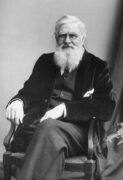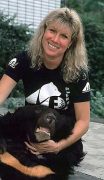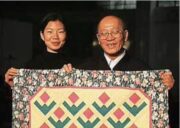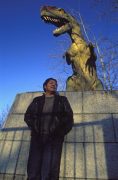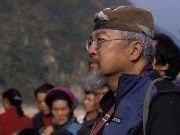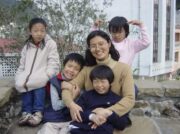November 2013 saw the death of a man described by Craig Venter, among the pioneers of human genome sequencing, as “One of the most important scientists of the 20th century!” Yet though among only four people to have won two Nobel Prizes, this was a man who never became a household name, and even turned down a knighthood as he did not want people calling him “Sir”.
Frederick Sanger made pivotal contributions to studying the chemistry of life. Unlike Watson and Crick, who discovered the double helix of DNA, he did not achieve great leaps in understanding. Instead, as indicated by the title of his autobiographical article “Sequences, Sequences and Sequences”, Sanger’s primary achievements lay in finding how molecules were assembled.
These were no ordinary molecules, made from perhaps a handful of atoms. They were huge, complex molecules vital to life: proteins, and DNA.
Explaining biology in chemistry
Sanger was an undergraduate at Cambridge University in the late 1930s, and chose to read subjects including biochemistry, later noting, “The idea that biology could be explained in chemistry seemed an exciting one…” He took an advanced course in biochemistry, leading to a PhD with a team studying proteins.
Then, Sanger joined a Cambridge University team focusing on amino acid analysis of proteins. Amino acids are nothing like typical acids, such as the powerful sulphuric and nitric acids, but are organic molecules with chains and sometimes rings of carbon atoms, along with hydrogen, nitrogen and oxygen atoms. Around 500 are known, but there are only 22 natural amino acids that are found in proteins.
As Sanger began his research, it was known that amino acids were the building blocks of proteins. There were, however, notions that even though an individual protein was made from a specific combination of amino acid, its actual structure might vary from molecule to molecule. Sanger showed that this was not the case, by creating the first sequence of a protein molecule.
The team concentrated on insulin, both because it was of medical importance – regulating carbohydrate and fat metabolism – and as it could be bought in pure form. Sanger’s sequencing work adopted several new techniques, including chromatography, which allowed separation of chemicals resulting from fragmentation of insulin molecules.
This was painstaking, unglamorous, even dangerous work. Sanger later recalled a period during which “we were consigned to a lab in the basement next to the experimental rats”, and an incident when a flask exploded, damaging a student’s eye. Sanger also experimented with dyes to make the fragments show up on the chromatographs. He gave up on one of these after it did not work too well with proteins, and led to complaints from other occupants of the lab when their biological preparations all became bright red.
Early in the research, Sanger realised that each insulin molecule was actually formed from two chains of amino acids. Eventually, after he and colleagues had worked on their fragments, he worked out the exact sequence of each chain, and determined how they were connected together.
The sequencing work had taken over 10 years, and paved the way for others to follow suit in discovering the structure of other proteins. For it, Sanger received the Nobel Prize in Chemistry 1958. “The proteins are among the most complicated and enigmatic substances in Nature and appear to be particularly closely related to all that we call Life,” said Professor Arne Tiselius during a Presentation Speech… The determination of the exact building-plan for these complicated giant molecules appears as one of the greatest problems in today’s scientific research.”
Tiselius also remarked that, “It was Alfred Nobel’s intention that his prizes should not only be considered as awards for achievements done but that they should also serve as encouragement for future work,” – and Sanger was to prove himself no one-Nobel wonder.
Sanger method for DNA sequencing
Sanger experienced what he termed lean years, with no major successes, before in 1962 moving to a new Cambridge laboratory dedicated to molecular biology. Here, he was influenced by people like Francis Crick of the DNA helix, and became interested in the nucleic acids: RNA and DNA.
Little progress had been made with sequencing nucleic acids, even though they were made from just four components – monomers known as nucleotides. Part of the issue was their sheer size, with hundreds, thousands or even millions of nucleotides in a single DNA molecule.
An American team had sequenced a small RNA molecule using similar techniques to those employed for proteins. But as this method required analysing fragments, it would be too slow for most nucleic acids.
Sanger sought a faster method for separating fragments of RNA, and recalled that one of his few moments of sudden exhilaration came when a technician came into the lab brandishing a beautiful sheet of film with clear, round, well-separated spots – representing fragments that hitherto had only formed streaky, unresolved pictures.
His group moved on to DNA, and developed what became known as the Sanger method for DNA sequencing. This involved separating a DNA molecule into its two strands, and then cloning each of them. But instead of cloning procedures involving just the T, G, A and C nucleotides, the method introduced special variants of each of them, which would join chains but not allow them to grow further.
This meant that a cloning process might be run including a variant of T, so that a strand that should start AGTCAGTCT could form this entire sequence, along with shorter forms AGTCAGT, and AGT. By running the process with each of the other three variants, all other possible sections of the DNA strand were formed. The resulting mixtures were introduced to a gel, and a weak electric charge separated them – pulling shorter strands further than longer ones.
Sanger became responsible for the first complete determination of the sequence of a DNA molecule – sequencing the 5375 building blocks in the DNA of a bacterial virus. His method has also been used in determining the sequence of DNA from humans.
This work led to Sanger becoming one of three recipients of the Nobel Prize in Chemistry 1980. Three years later, aged 65, he retired. But his name lives on in active genome research, through the UK-based Sanger Institute. Sanger agreed that his name be used for this; adding, “It had better be good.”
Top People
Helicopter crews brave mighty winds and waves to rescue seamen during South China Sea typhoons
On the morning of 2 July 2022, as Hong Kong was lashed by gales and rainstorms…
James Reynolds typhoonhunter and volcano videographer
An Eye for the Storm As Super Typhoon Dujuan slammed into northeast Taiwan late on 28…
Maasai safari guide Jackson Looseyia
BAD-TASTE BLOOD My home village had about 15 people in it. What we think of as…
Blue light at last wins Nobel for LED titans
While the 2013 Nobel Prize in Physics was for an esoteric advance in knowledge — theoretical work…
Genius of the Jungles: Alfred Russel Wallace
Recently came news of a study finding that the distribution and evolution of Galapagos wildlife have…
The butterfly and the remarkable Professor Hofstadter
This spring, there was excitement in the world of physics as a long-predicted butterfly was proved…
James Hansen Godfather of Climate Change retires yet will be very busy
This month [April 2013], climate scientist Dr. James Hansen retired as head of NASA’s Goddard Institute…
Pan Wenshi: Scientist Who Fights for the Pandas
In a cave near a tributary of the Youshui River, Pan discovers Jiao Jiao, an eight-year-old,…
Jill Robinson helping bears
First Jill Robinson was shocked, then she set out to stop the suffering The Great Bear…
Jessie Yu – Hong Kong Single Parents Assoc founder
The best way to get ahead, says this tireless Hong Kong philanthropist, is to help yourself.…
Keeper of the Kings: Captive breeding Philippine Eagles
One man’s perseverance offers hope to a critically endangered bird of prey On a warm, sunny…
Dr Yang Lihe helping former leprosy patients
Dr. Yang Li-he has spent his life helping cure leprosy. Now he is helping former patients…
Dinosaur hunter Dong Zhiming
Unearthing China’s Real Dragons Dong Zhiming, 26, walked atop a low cliff of red and yellow…
Dramatic rescue by brave helicopter crew from roof of blazing Garley Building in Kowloon
Captain Mike Ellis eased the Sikorsky Blackhawk in towards the beleaguered, 16-storey Garley Building, in the…
Mountain Dog and rebuilding schools in China
I’m at a charity ball in Hong Kong, seated among a hundred guests in a bright…
Mother Ko’s fight for justice
The more lawmakers ignored her, the more determined she became to seek justice On a grey,…
SARS doctor and heroine Yannie Soo
A mysterious illness was striking the medical staff down one by one. How could they fight…
Allen Lien
In October 2002, boxes of clothes began arriving in Burkina Faso, a country in West Africa,…
Teacher Lin helps kids in Taiwan
Teacher Lin has a dream, in which more and more needy children find their home sweet…





